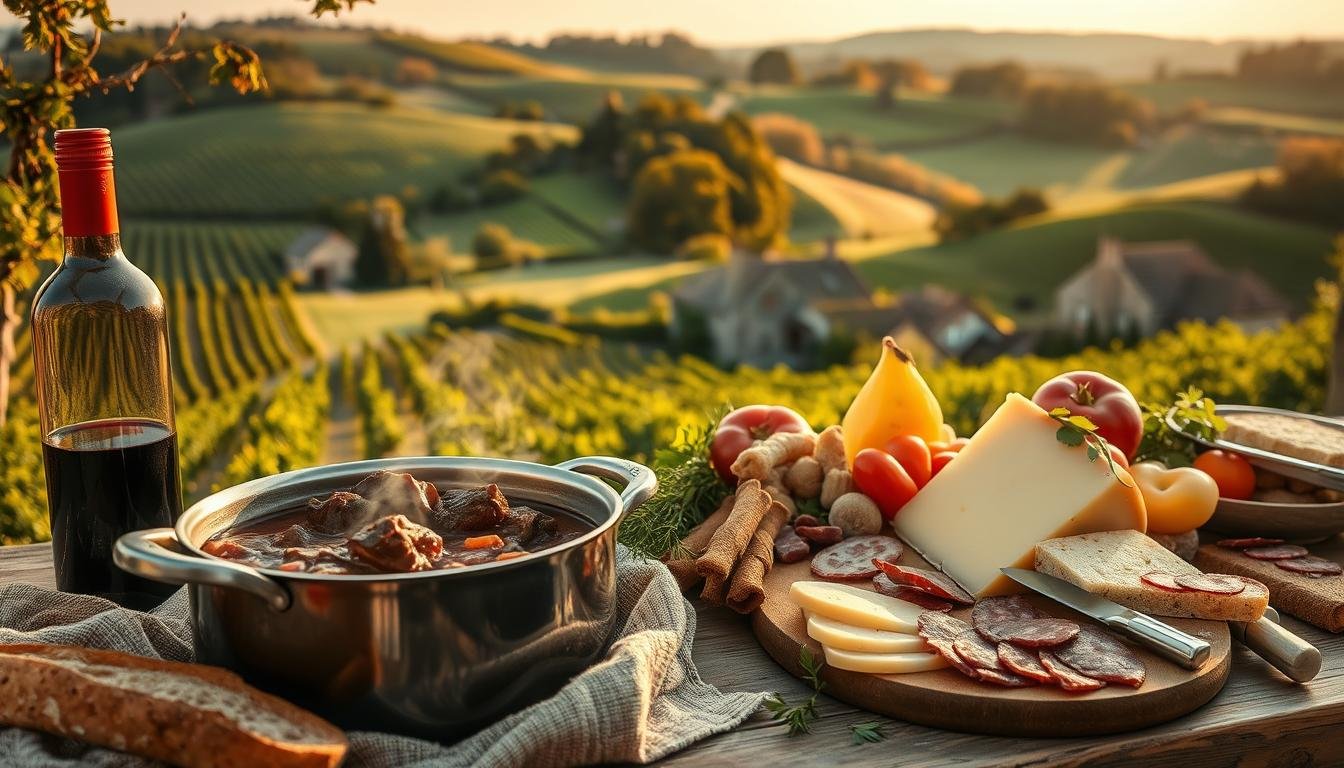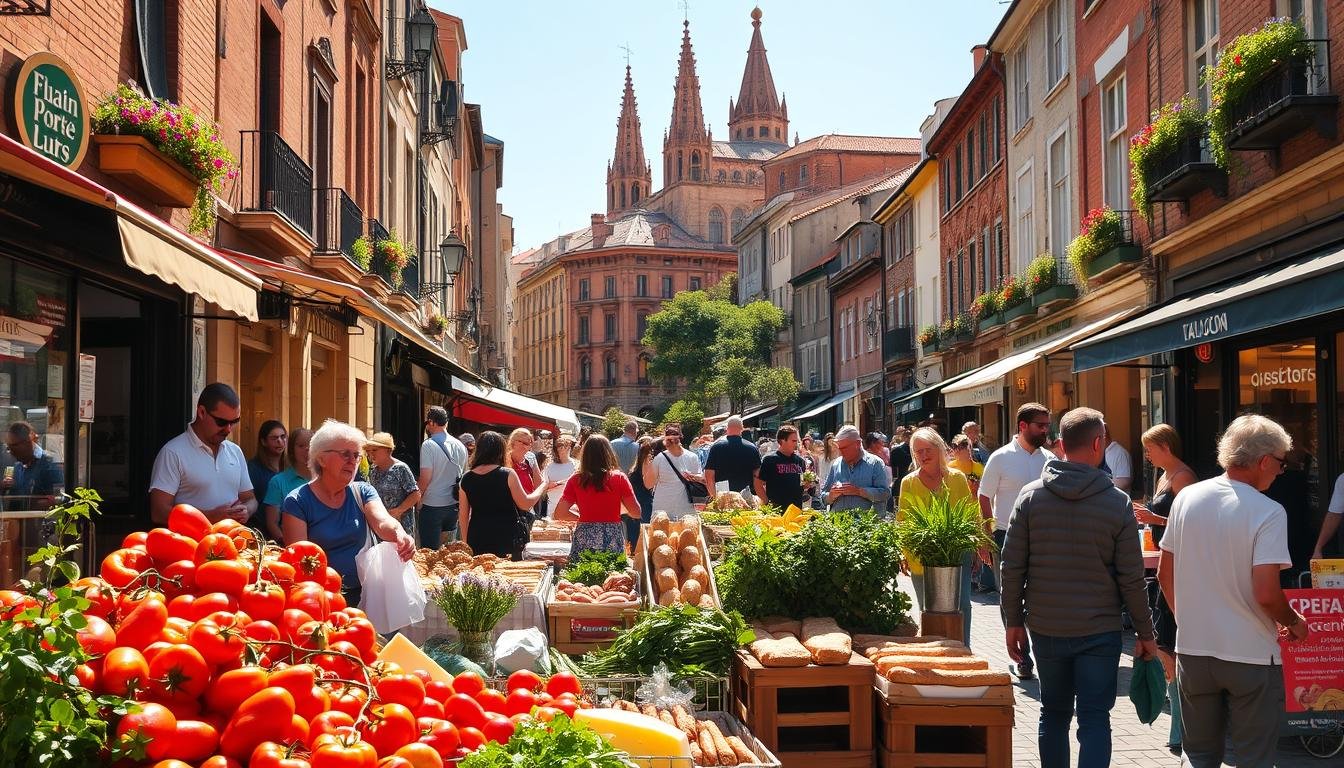My first taste of Grenoble’s food was at a rustic table with snow-dusted peaks in view. The mountain air mixed with thyme and cheese scents. This is where alpine food culture comes alive.
Dishes like fondue au Reblochon and buckwheat galettes tell the region’s story. Flavors are shaped by its valleys and cold winters. Grenoble’s food culture turns harsh landscapes into nourishment and celebration.
At Les Halles market, I saw ingredients with their own geography. River trout from the Isère, walnuts from groves, and cheeses aged in cellars. This shows terroir in action, turning maps into menus.
Like Verona’s wine heritage in Italy’s heart, Grenoble’s flavors are tied to its surroundings. Every bite of tartiflette or sip of vin de paille tells a story.
Key Takeaways
- Grenoble’s cuisine reflects its alpine environment through hearty dishes like Reblochon cheese and buckwheat crepes
- Seasonal ingredients like wild mushrooms and freshwater fish define French mountain cuisine’s rhythms
- Traditional cooking methods preserve centuries-old techniques adapted to Grenoble’s climate
- Local markets showcase the direct connection between land and plate in Grenoble gastronomy
- Culinary tours reveal how alpine geography shapes both ingredient availability and dining traditions
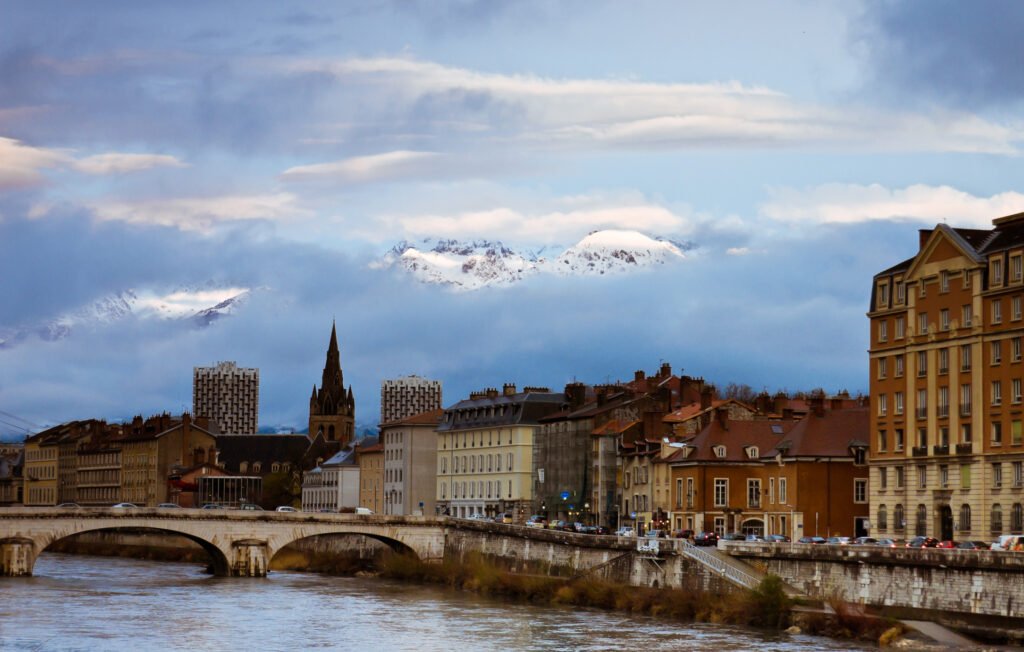
The Alpine Influence on Grenoble’s Gastronomic Identity
My journey into Grenoble’s kitchens showed me something special. The land here shapes the menu. Alpine gastronomy is more than food; it’s a connection between mountains and plates.
The rugged landscape influences every ingredient. From slow-roasted stews to wild herbs, it all comes from the land.
How Mountain Geography Shapes Flavor Profiles
The mountains of Grenoble have made its food unique. Trout from mountain streams are crisp and mineral-rich. Cheeses from high-altitude pastures are tangy.
Local chefs highlight these differences. At Chez Léa, a century-old auberge, I saw how preserved lardons and dried mushrooms add smoky depth to winter dishes.
The Seasonal Rhythm of Alpine Cuisine
| Season | Signature Ingredients |
|---|---|
| Spring | Morels, young lamb, asparagus |
| Summer | River fish, alpine strawberries, walnuts |
| Autumn | Cepes, game meats, chestnuts |
| Winter | Charcuterie, root vegetables, fondue |
This cycle defines mountain cuisine flavors. Restaurants here follow the seasons strictly. No strawberries in December, no game before hunting seasons.
My First Encounter with Authentic Mountain Fare
“Taste the rocks in the broth,” advised a chef at La Table des Pionniers. His hearty pot-au-feu, simmered with limestone-filtered water, carried the sharpness of alpine limestone and the sweetness of locally grown carrots. That moment crystallized Grenoble’s food identity for me: a cuisine inseparable from its terrain.
Every dish here tells a story. It’s a reminder that mountain cuisine is more than food. It’s a dialogue between earth and eater, shaped by centuries of adaptation.
Why a Culinary Tour of Grenoble Changed My Perception of French Cuisine
Before my culinary tour of Grenoble, I believed in French cuisine misconceptions. I thought French food was all about creamy sauces and strict rules. But, the real French food is a world of rustic flavors that changed my mind.
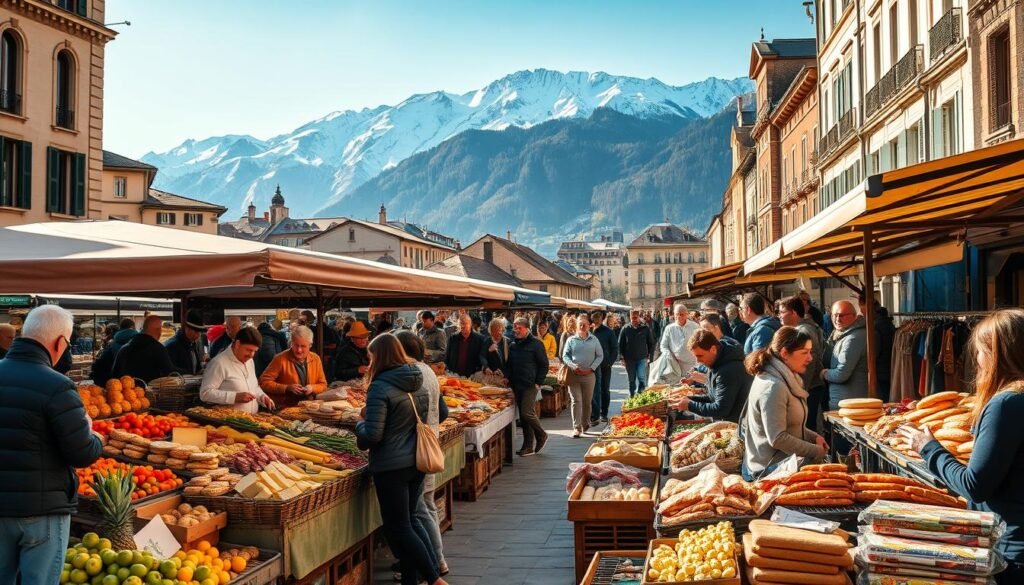
| Preconception | Grenoble Reality |
|---|---|
| Heavy, elaborate dishes | Simple, mountain-rooted flavors |
| Formal dining etiquette | Communal tables, lively conversations |
| Uniform national cuisine | Distinct regional traditions |
My senses came alive during a Grenoble food discoveries moment. I tried a tourte aux noix, a nut pie with local walnuts, baked in a wood-fired oven. It was a far cry from the fancy Parisian dishes I imagined.
At a farmhouse, I saw cardoons cooked with chestnuts. Their earthy taste showed me the beauty of foraging. And at Le Caveau des Fous, I shared meals with strangers. We enjoyed charcuterie and Isère wine together, making new friends.
These experiences broke down my old views. Grenoble’s food is about its place, not pretence. The Alps’ isolation kept old cooking methods alive, but chefs here mix tradition with new ideas. My trip showed me France’s true flavors are found in places like Grenoble, where every bite tells a story.
Beyond Cheese and Wine: The Unexpected Diversity of Grenoblois Cuisine
When I first thought of Alpine dining, I imagined cheese plates and hearty stews. But Grenoble’s culinary scene is much more than that. The region’s Grenoble food diversity shines in markets filled with Alpine vegetables and wild foraged ingredients. This challenges the common views of mountain cooking.
The Surprising Vegetable Traditions of the Region
Mountain farmers grow tough Alpine vegetables like cardoons. These are used in winter soups. They also grow heritage potatoes that do well in rocky soil. At Les Halles market, I saw spelt used in breads, similar to Italy’s regional grain cultures. This shows the region’s biodiversity, with a unique alpine flavor.
River-to Table: The Freshwater Delicacies
- Arctic char (omble chevalier) caught in Lake Bourget has a unique taste.
- Fishermen serve French river fish like fera, which tastes great with walnut sauces.
- Perch fillets pan-seared with capers are as crisp as the lake air.
Forest Harvests: Wild French Ingredients
Walking with local chef Lucie Marceau through the forest, I learned about wild French ingredients. Autumn’s cèpes and spring’s ramps are used in dishes. Marceau said,
“Every season gifts something wild and unexpected.”
Grenoble’s pantry is full of surprises, from cardoons to freshwater fish. It shows that Grenoble’s cuisine is as rich as its valleys. This is a revelation for those looking for more than just fondue and wine.
The Gratin Dauphinois Debate: Where to Find the Most Authentic Version
My search for the authentic Gratin Dauphinois started near the Belledonne mountains. Locals there protect traditional Dauphiné recipes as if they were family treasures. Over charred bread and walnut wine, chefs in Grenoble’s markets discussed the dish’s essence. They debated whether butter or cream should melt into the layers, and if garlic should go under the potatoes.
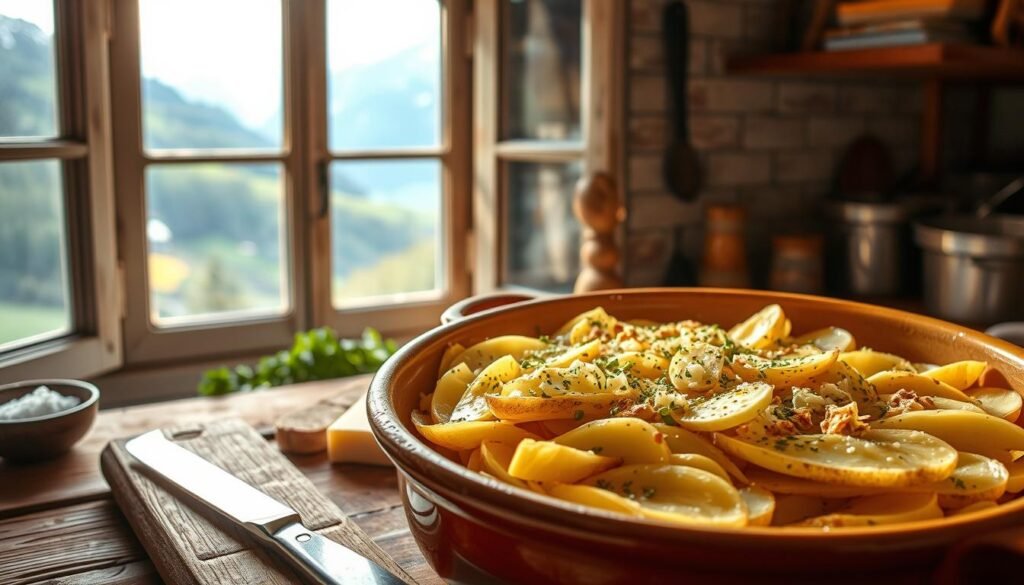
“A true Gratin needs patience, not ingredients,” said Madame Rousseau, a nonagenarian whose recipe card bore 1940s creases. Her version—potatoes sliced paper-thin, no cheese, nutmeg whispered in—melted like alpine snow on the tongue.
My tasting journey showed both traditional and innovative sides. At best Gratin Dauphinois Grenoble spots like Le Bistrot des Alpes, the crust was golden and crispy. La Maison de la Pomme de Terre showcased heritage potatoes, telling stories of the land. Even simple versions at market stalls carried the region’s frugal spirit.
- Authentic Gratin Dauphinois purists visit La Table du Berger, where cows graze in the same pastures as the dish’s 19th-century roots.
- Modern twists at L’Épicerie Verte mix local goat butter with smoked paprika, showing innovation can respect tradition.
- Home cooks in Vizille still use cast-iron molds passed down through generations, a tradition I saw during an Epicurean Escape guided market tour.
This dish is more than just food—it’s a language of the land. Every bite of the best versions captures the crispness of Dauphiné air, the patience of slow cooking, and the pride of those who keep history alive.
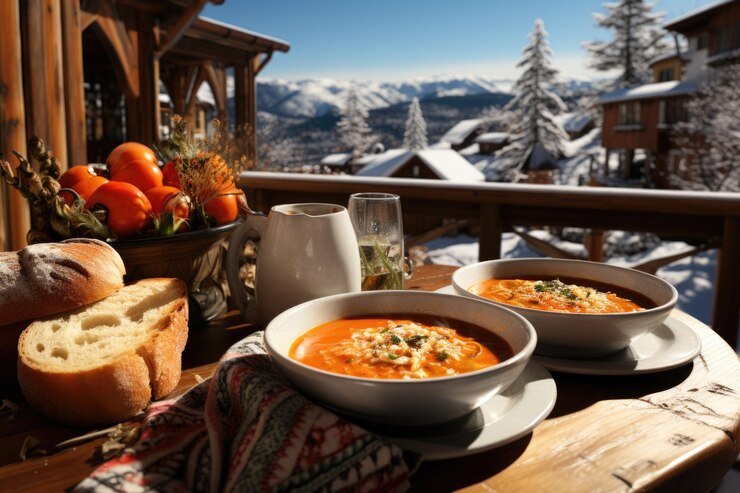
From Traditional to Progressive: The Evolution of Alpine Cooking
Walking through Grenoble, I see Alpine cuisine’s mix of old and new. In the sun, bistro windows show a blend of tradition and innovation. Each dish tells a tale of keeping old ways alive or starting new ones.
Old Guard Restaurants Preserving Culinary Heritage
Family-run estaminets like La Maison des Alpes honor their heritage. Here, I enjoyed pommes Anna made with thin slices and butter until they were golden. This dish has stayed the same since 1890.
Owners see themselves as guardians of taste. Their kitchens are filled with the smell of wood-fired ovens and the whispers of old secrets.
Innovative Chefs Reimagining Mountain Traditions
Now, French chefs are putting their own spin on old favorites. At L’Étoile des Neiges, a young chef adds herb-infused foams to ravioles. This turns simple cheese dumplings into light-as-air bites.
“We respect the past but use science to make it deeper,” she said. I tasted thyme and pine in a modern Alpine cuisine twist on fondue.
The Fusion Effect: Global Influences in Modern Grenoblois Kitchens
- Japanese knife skills meet Alpine truffles in sashimi-style dishes
- North African spices add flavor to wild boar ragouts
These fusion mountain food dishes are found at markets where chefs dare to try new things. To follow their journey, check out curated culinary itineraries. This way, you see a cuisine that respects its past but looks to the future.
Markets as Cultural Crossroads: What Les Halles de Grenoble Reveals About Local Identity
My mornings at Les Halles de Grenoble start early. Farmers bring in Grenoble local produce in wooden crates. Their hands are still cold from the morning’s work.
This market is more than just a place to buy food. It’s where the region’s spirit comes alive. The smell of Chartreuse-infused honey and mushrooms fills the air, showing off the Alps’ rich offerings.
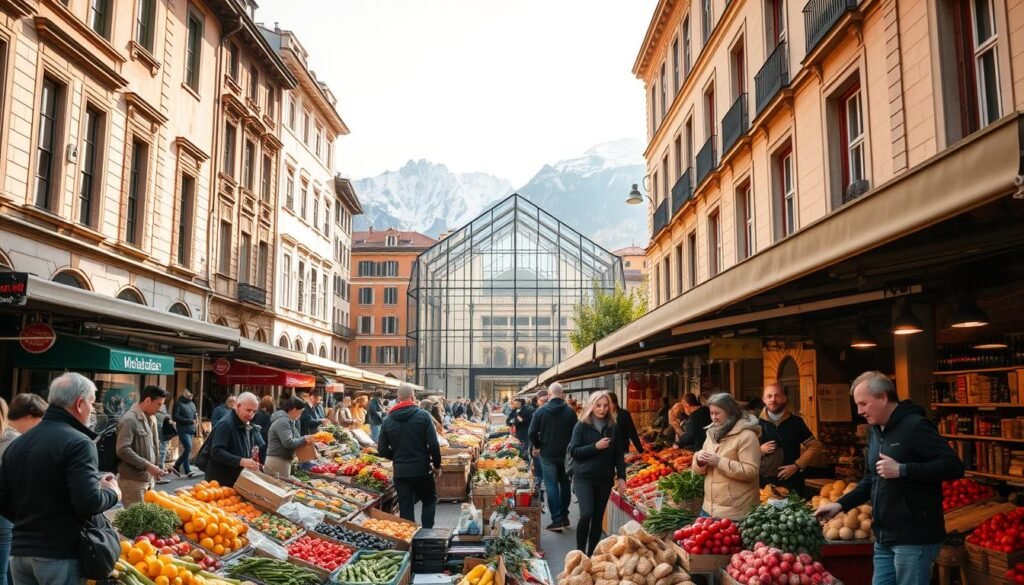
Exploring the market, I’ve learned to understand its language. A cheese maker shows me how each cheese’s rind tells a story of the mountains. Nearby, a forager’s stall is full of morels, gathered under ancient trees.
“This is our heritage,” a vendor said, “not just goods.”
“The market brings life to what we eat,” says Sébastien, whose family has sold charcuterie here for decades. “You taste the mountains in every bite.”
Les Halles de Grenoble is all about tradition. Locals haggle with farmers in their own secret language. Children try fresh Grenoble local produce, while seniors debate the first truffles of the season.
This is where the region’s food culture meets its future. A culinary tour of Grenoble isn’t complete without this place. It’s where old traditions meet new flavors, one delicious bite at a time.
The Walnut Route: How a Single Ingredient Defines Regional Character
In the Isère valley, walnut trees line the landscape like a natural quilt. Farmers here treat their orchards with great care. Each walnut is a symbol of centuries of farming knowledge.
The area’s cool mountain air and rich soil make the walnuts bigger and sweeter. This is the core of Grenoble’s food culture. Every walnut shell has a story to tell.
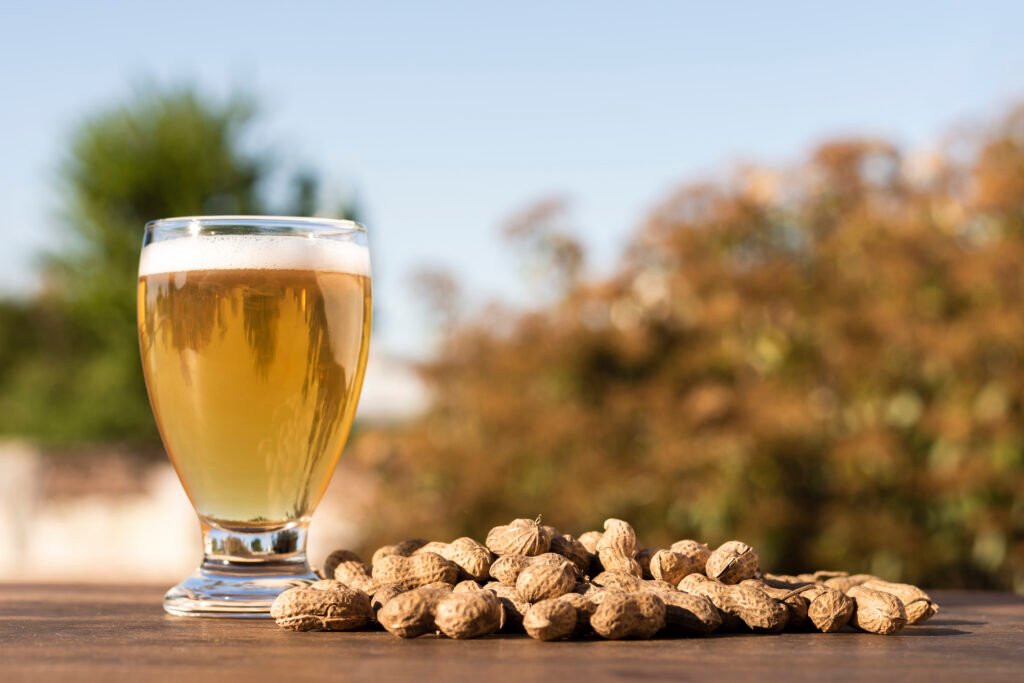
Walnut Liqueur and Its Ceremonial Significance
I once saw the harvest of green walnuts on June 24th, the Feast of Saint John. Elderly hands picked the nuts at dawn. They then sliced the green husks.
The liqueur is made by soaking the nuts in local wine and eau-de-vie for months. “This is our liquid heritage,” said Hélène, a third-generation producer. The liqueur adds a unique flavor to winter stews and toasts to the land.
From Appetizer to Dessert: The Versatility of Grenoble’s Prized Crop
In Grenoble, walnuts are used in many ways. At a farmhouse kitchen, walnut oil was drizzled over freshwater char. It added a peppery flavor.
A cheese shop paired Noix de Grenoble with Saint-Marcellin cheese. The nut’s crunch was a perfect contrast. And a walnut tart from a boulangerie was a savory delight.
| Course | Signature Dish | Signature Flavor |
|---|---|---|
| Starters | Walnut and walnut oil salad | Peppery, nutty |
| Main | River fish with walnut emulsion | Earthy, briny |
| Desserts | Noix de Grenoble tart | Caramelized, buttery |
Every bite of these walnuts connects to the land’s story. Culinary travelers can explore this through guided walnut harvest tours. The nut’s story reflects Grenoble’s blend of tradition and innovation.
Mountain Spirits: The Revival of Alpine Distilleries and Microbreweries
My journey into Grenoble’s liquid heritage started at the Carthusian monastery. Here, Chartreuse liqueur is born. I learned about 130 herbs distilled into green and yellow elixirs that capture the Alps’ essence. The first sip of Chartreuse liqueur showed why it’s a cultural touchstone.
Today, innovators are redefining tradition. At a family-owned distillery, I tasted a violet eau de vie made from wild blossoms foraged above 1,500 meters. The brewmaster said, “We’re preserving what the monks started.” Nearby, microbreweries are making Alpine craft beer with glacial spring water and edelweiss and gentian root.
These creators honor heritage while pushing boundaries. A tasting at La Brasserie des Dômes showed a saison brewed with heather from Vercors Massif. Its floral notes echo Barcelona’s culinary renaissance where tradition meets innovation. The mix of old and new defines this revival:
| Traditional | Modern Innovations |
|---|---|
| Chartreuse liqueur formulas | Wildflower foraged spirits |
| Copper pot stills | Lab-optimized fermentation |
| Monastic secrecy | Collaborative distiller collectives |
One brewer talked about aging beer in reused Chartreuse casks: “The terroir’s in every molecule.” From monastery cellars to craft taprooms, these artisans turn mountain resources into liquid landscapes. They prove that Grenoble’s French mountain spirits are about place and flavor.
The Social Ritual of Dining in Grenoble: Why It’s Unlike Any Other French City
My first Alpine lunch was like a slow-motion film. It was unlike the quick lunches I was used to in New York. In Grenoble, meals are more than just a break—they’re a shared experience.
At a sunny bistro, servers brought out raclette fondue like they were leading a meal symphony. The French dining customs here are like a secret language. Bread comes after wine, and business talk waits for the cheese course. This is the essence of Grenoble restaurant culture, where every bite celebrates the mountains.
The Extended Alpine Lunch: A Cultural Institution
A local chef once said, “We eat to nourish the soul as well as the body.” Three-hour lunches are not just for fun—they’re a tradition passed down through generations.
I saw people enjoying charcuterie platters, their laughter filling the dining rooms. These places turned into temporary villages. This culinary tour of Grenoble showed how time slows down, just like the mountains.
Restaurant Etiquette That Surprised This American Visitor
“The meal’s first hour is for stories, not business,” said Madame Lefèvre, a third-generation tavern owner. “Work comes after the digestif.”
When I asked for a quick espresso, I was gently corrected. Here, Alpine dining traditions mean meals are like a symphony. Appetizers start, mains build up, and digestifs end with quiet reflection.
Even the way you hold your fork has meaning. I learned this through smiles and patient explanations.
Every meal in Grenoble feels like a shared secret. It’s a chance to taste history and the patience of a culture that values slow eating.
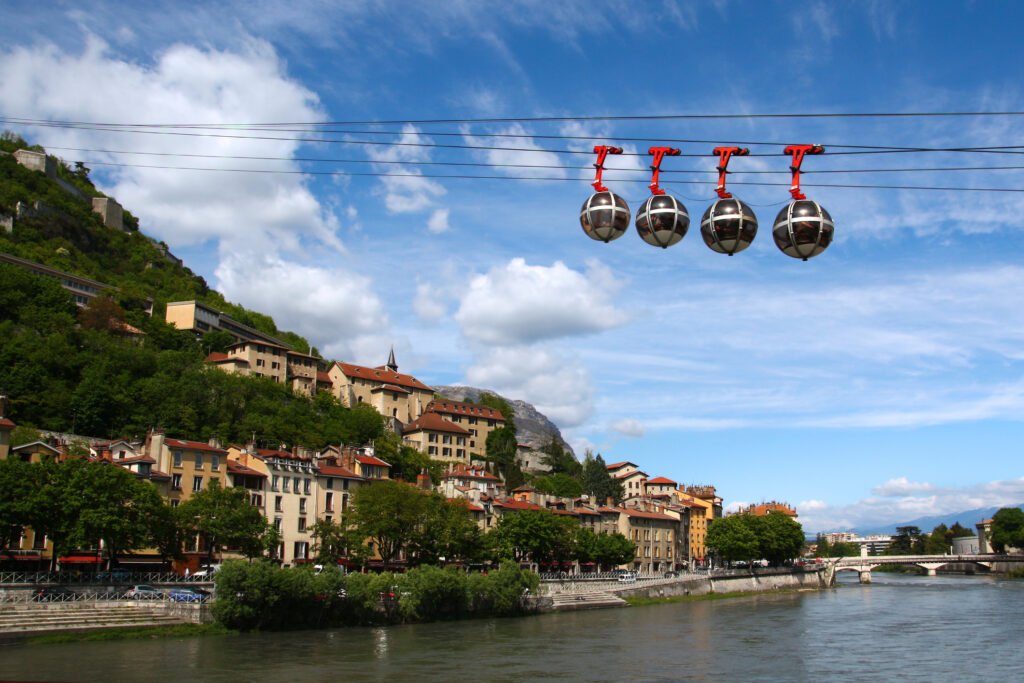
Sustainability in the Mountains: How Grenoble’s Chefs Are Leading Environmental Gastronomy
Walking through the terraced gardens behind Maison des Neiges, I was amazed by sustainable French cuisine. Chefs here see the land as a source of inspiration. At eco-friendly restaurants Grenoble, menus celebrate the region’s terroir. Dishes like thyme-kissed charcuterie and wild herb-infused cheeses share stories of the land’s resilience.
“The mountains teach us to take only what we need—no more, no less,” explained chef Léa Moreau. She showed me her zero-waste kitchen, where carrot tops make pesto and bone marrow enriches broths.
These practices are not just trends but essential for survival. Think of the fermes d’altitude where farmers like Jean-Pierre Rousseau grow heritage grains. These grains, like spelt and buckwheat, are featured at Le Pic du Vautour, showcasing green gastronomy. Dining here feels like a commitment to nature, with platters on wooden boards from old barns.
| Tradition | Innovation | Impact |
|---|---|---|
| Root cellars for preservation | Solar-powered dehydration | 30% less food waste |
| Seasonal foraging | Vertical hydroponic gardens | Fresh herbs year-round |
From farm-to-table Alps partnerships to rooftop apiaries, every choice is a promise. The outcome? A dining experience where each bite reflects the place, purpose, and possibilities.
Conclusion: Why Grenoble Deserves Its Place on the Global Culinary Map
Exploring Grenoble’s food scene showed me a city where every meal has a story. It’s a hidden treasure in the best food cities France that’s often overlooked. But its secret is its true Alpine gastronomy.
The flavors here, like walnut liqueur and forest mushrooms, are deeply connected to the land. This shows that undiscovered French cuisine is alive and well, where new ideas meet old traditions.
A culinary tour of Grenoble is more than just tasting food. It’s a conversation between the mountains and the people. Chefs here mix old ways with new, showing that tradition and innovation can go hand in hand.
Visiting in autumn for the walnut harvest or spring for fresh herbs is special. It connects you to the natural world.
Grenoble stands out by not following every trend. Its restaurants and markets, like Les Halles de Grenoble, focus on local and sustainable food. This is a lesson in eating well without harming the planet.
Travelers should look for family-run places instead of tourist spots. Here, a simple dish of trout or a sip of Chartreuse can start a deep conversation with history.
Grenoble isn’t chasing fame; it’s already full of flavor. In a world where food is often the same everywhere, Grenoble’s food culture stands out. It’s a place where food is a celebration of place, patience, and the art of nourishing both body and soul.

